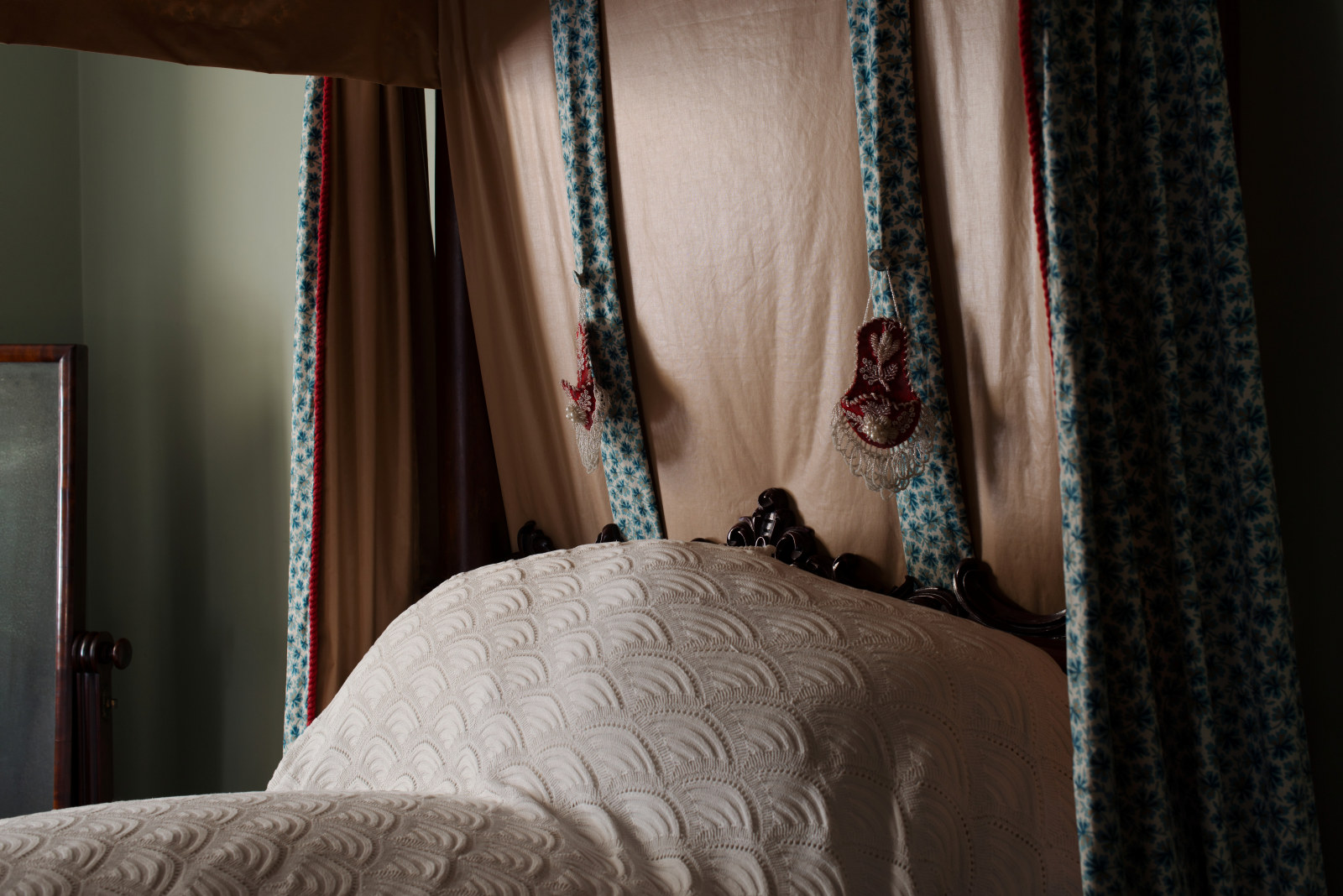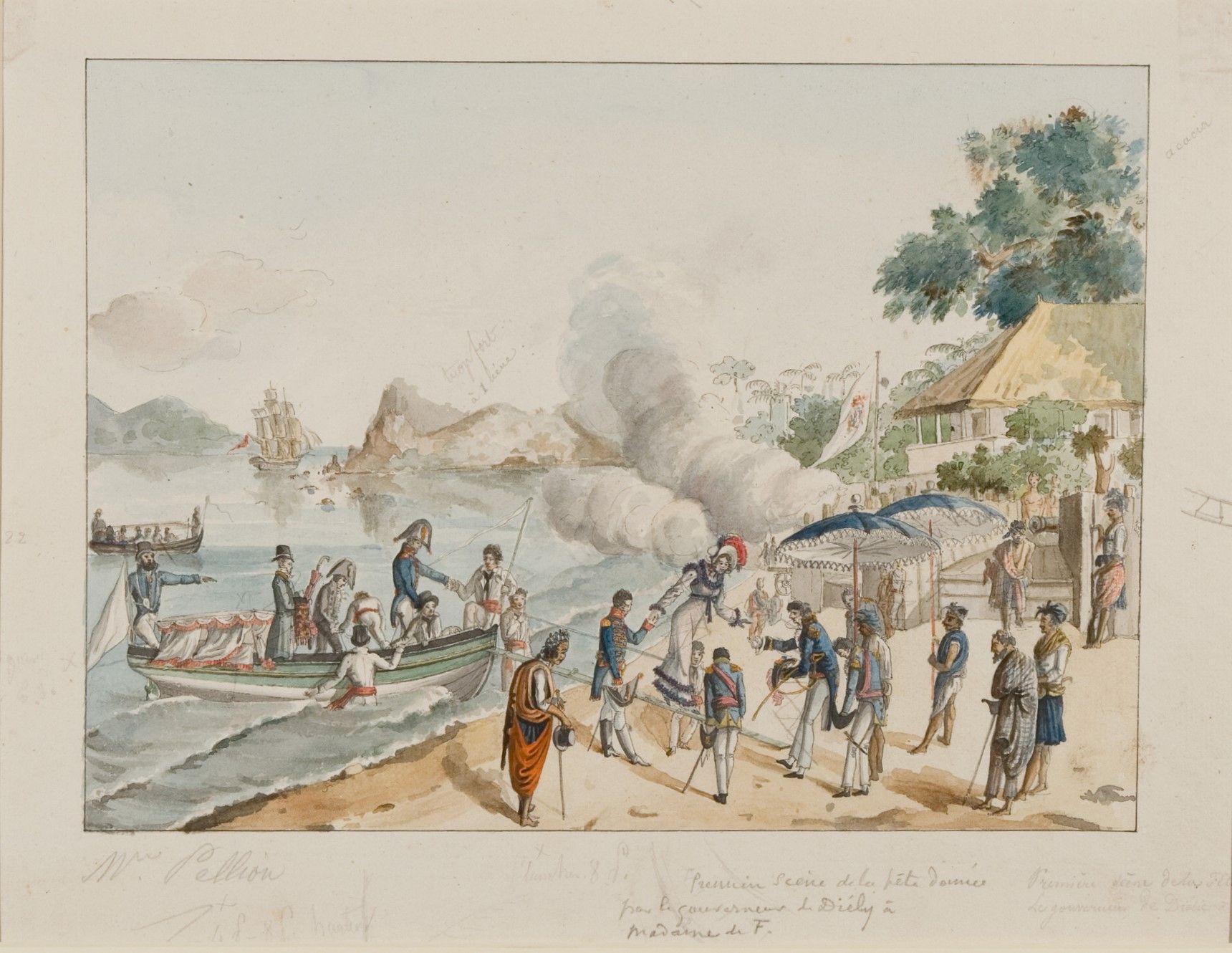Gas hall light
This type of cube-shaped light with its metal frame supporting coloured and bevelled glass was typically used in entrance halls of Australian homes in the last two decades of the 19th century.
Although gas was introduced to Sydney in 1841, it was not commonly used for lighting suburban homes until the 1870s. Light from gas was found to be brighter than that from other available sources such as kerosene but also thought to give off a ‘hard, unsympathetic lustre’ according to domestic advice manuals such as Artistic homes: or, how to furnish with taste, a handbook for all housekeepers (Ward, Lock & Co., London, 1880).
Some homeowners were also reluctant to use gas lighting because of its association with garish or ostentatious interiors in theatres and shops, an association that was at odds with late 19th century middle class ideas about the home as a place of quiet repose or elegant refinement. The intensity of light showed the corners of a room not previously exposed, creating challenges for the way in which rooms were furnished.
The imperfect combustion of coal gas presented further problems: fumes from gas lighting reduced air quality for house occupants and could damage or taint soft furnishings, wallpapers and gilt surfaces like picture frames. Blackened ceilings were also a common complaint requiring the addition of bell-shaped smoke ‘consumers’ designed to capture the fumes. The introduction in 1885 of the Welsbach burner for gas lighting reduced offensive fumes and made gas lighting more acceptable, just as it was about to be superseded by electric lighting.
Electricity was introduced to Sydney in stages from the 1890s onwards but gas lighting could still be found in many Sydney suburban homes until at least the 1930s. Some householders found the new electric light too harsh.
The author of the domestic advice manual, Artistic homes or how to furnish with taste (1880) acknowledged the drawbacks of gas light but suggested that householders should
look upon gas as a necessary evil, or at best as a good servant with many grave faults’ and should recognize that ‘the convenience of gas in the house has commended and will continue to commend it to general use.
The manual suggested that one resolution of the problem was to ‘procure as tasteful and artistic fittings as practicable’ and observed that makers and manufacturers of art metal-work had taken to ‘forge and file and punch’ to create a range of gas light fittings suitable for different rooms. In the drawing room, for example, a central gasolier might be used with light distributed around the room by bracket-burners. In the dining room a gasolier might be used above the table accompanied by a bracket with an argand burner over the sideboard to light the china and plates.\The use of coloured glass shades was designed to be decorative but it also had a practical role as it helped to cut the intensity of light from gas. Good illumination from gas could actually vary quite considerably depending on the quality and pressure of gas from the local gasworks. In addition, lighting quality could be poor if householders did not clean and change their burners regularly.
The metal bell-shaped device above the light is known as a smoke ‘consumer’ designed to capture blackening fumes given off by imperfectly burning gas. The invention in the 1880s of the Welsbach burner, a cotton or ramie fibre mantle impregnated with chemicals, improved the quality of light by burning brighter but also burning more cleanly. An advertisement for Welsbach burners claimed 'the combustion being perfect, no free carbon is thrown off, the atmosphere is kept pure, the ceilings are not blackened, and decorations are not tarnished.'
Hall pendants
The eminent firm of Hart, Son, Peard & Co, established in London around 1866, specialised in brass, iron and silver ecclesiastical fittings, light fittings and a wide range of interior and exterior architectural cast iron and wrought iron work. This 1877 catalogue of fittings for lighting was section 4 of a 7-part catalogue published by the firm between May 1871 and April 1885. It demonstrates the wide choice of decorative options offered by the manufacturer in the second half of the 19th century and their capacity to customise individual articles to suit gas, oil or candle power. The variety of floral, foliate, scroll, heraldic and grotesque motifs incorporated into the fittings were drawn from medieval designs and were a response to fashions influenced by mid-19th century Gothic Revivalism. The firm was largely known for production of ornate metal work, achieving a high level of workmanship via traditional hand wrought practices, rather than modern industrial methods of production.
This particular copy of the catalogue formed part of the trade library of Sydney art metal workers, James Castle & Sons, established in 1889 in King Street Newtown. Castle & Sons worked in brass, copper, bronze and iron. Castle participated in the Sydney Arts and Crafts Exhibition of 1892, displaying ecclesiastic wrought brass-ware such as gas standards, brackets and pendants, hanging lamps and candelabra.
For more information about this catalogue, see the library catalogue.
Leaded glass hall lamps
Entrance halls were traditionally lit by hall pendants or hanging lanterns, fitted for candles in the 18th century, fitted for gas and then later electrified in the 19th century. In the 1880s hall lights often included coloured glass, both figured rolled glass and stained glass, which might be arranged with etched glass to create a rich decorative effect. By the last two decades of the 19th century, hall pendant lights were commonly square or cube-shaped rather than oval or round.
For more information about this catalogue, see the library catalogue.
Published on
Caroline Simpson collection
Browse all
The Astor, 1923–2023
Upon completion in 1923, The Astor in Sydney's Macquarie Stree twas the largest reinforced concrete building in Australia, the tallest residential block, and this country’s first company title residences

City of Gods, my early experience and toy boat
Inspired by a watercolour of the ruins of the temple of Vishnu, refugee curator in residence Jagath Dheerasekara writes about Devinuvara as a site of pilgrimage, colonisation and uprising

Watch pockets
Watch pockets hung on the head cloth of a four-post bedstead and originally served in place of bedside tables, which were uncommon in the 19th century

